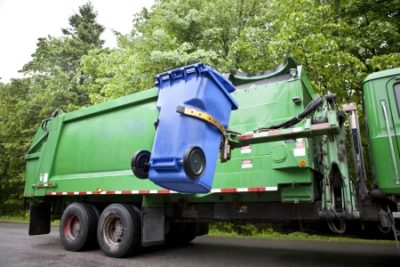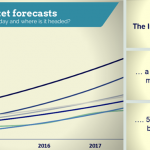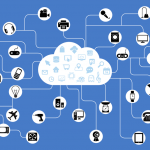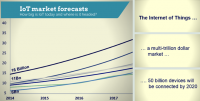IoT and waste management: Revolutionizing an old industry
IoT and waste management: Revolutionizing an old industry1

Experts estimate 50 billion connected devices by 2020. We typically think of the Internet of Things (IoT) in terms of autonomous cars, fitness wearables and smart homes, but some of the best applications of IoT technology are in fields that are industrial and intensely practical. One such example is waste management.
The U.S. generates nearly 230 million tons of trash every year – that’s 4.6 pounds of waste per person, per day. With strained budgets and growing populations, most nations are facing a crisis that keeps growing.
But there is a resolution: sustainability-focused IoT companies look at the waste crisis as both a challenge and as an opportunity to invent solutions that will reduce costs and increase efficiency. In fact, they’ve already made a number of significant advancements by innovating with sensor technology.
Sensor technology and route optimization
The ultrasonic level sensor is one type of sensor that IoT companies have put to good use. Initially designed to measure slurries and liquids, a number of businesses and municipalities are applying the sensor to measure solid waste as well. Ultrasonic level sensors work by emitting acoustic waves and then listening for an echo. Upon reaching a level surface, the waves will reflect back to the sensor with a measurement reading – similar to the process of echolocation. Think of it as a radar system that tracks the amount of garbage in a trash can.
One IoT company that specializes in remote monitoring systems, SmartBin, is using ultrasonic level sensor technology to help Australia-based Corio Waste Management reduce unnecessary collection trips. Corio’s haulers collect trash from bins spread across distances that range from six to nine miles. After a few months on the job, Corio realized they were wasting a significant amount of financial and environmental resources by sending trucks out to trash bins that were partially full or, at times, entirely empty.
To make Corio’s routes more efficient, SmartBin installed fill-level sensors into the lids of waste containers across the region, giving them the tools to track the amount of garbage in each bin. With this information, Corio planned their pickup routes around the bins that were near-full and needed pickup, reducing their travel times, costs and fuel expenditure.
A connected system for waste
Manually keeping track of pickup routes and fill-levels are expensive and time-consuming procedures. Realizing that a connected network of sensors would help waste management and other disposal services track their activities, Chicago-based OnePlus Systems developed a universal sensor and software system to monitor compactor fullness, collection routes and pickup histories.
By using wireless machine-to- machine (M2M) communication technology, OnePlus’ universal waste monitoring system can take on the role of an entire operations team by itself. The monitoring system is connected to a network of sensors that can “speak” – or share information — with each other. For example, the system uses connected sensors to determine which trash bins are full, and, without any human interaction, will automatically call for a pickup, saving time and slashing costs.
Through the use of sensors and M2M devices, companies like OnePlus and SmartBin can continue to refine IoT technology to improve transit routes, sustainability, and cost efficiency for waste management services all over the world.
The author is a partner at ParkerGale, a private equity firm that acquires profitable, founder-owned software and technology-enabled services companies and helps them with their product development, sales, and growth strategy. Disclosure: ParkerGale has an investment in OnePlus Corp.
The post IoT and waste management: Revolutionizing an old industry appeared first on ReadWrite.
(31)













